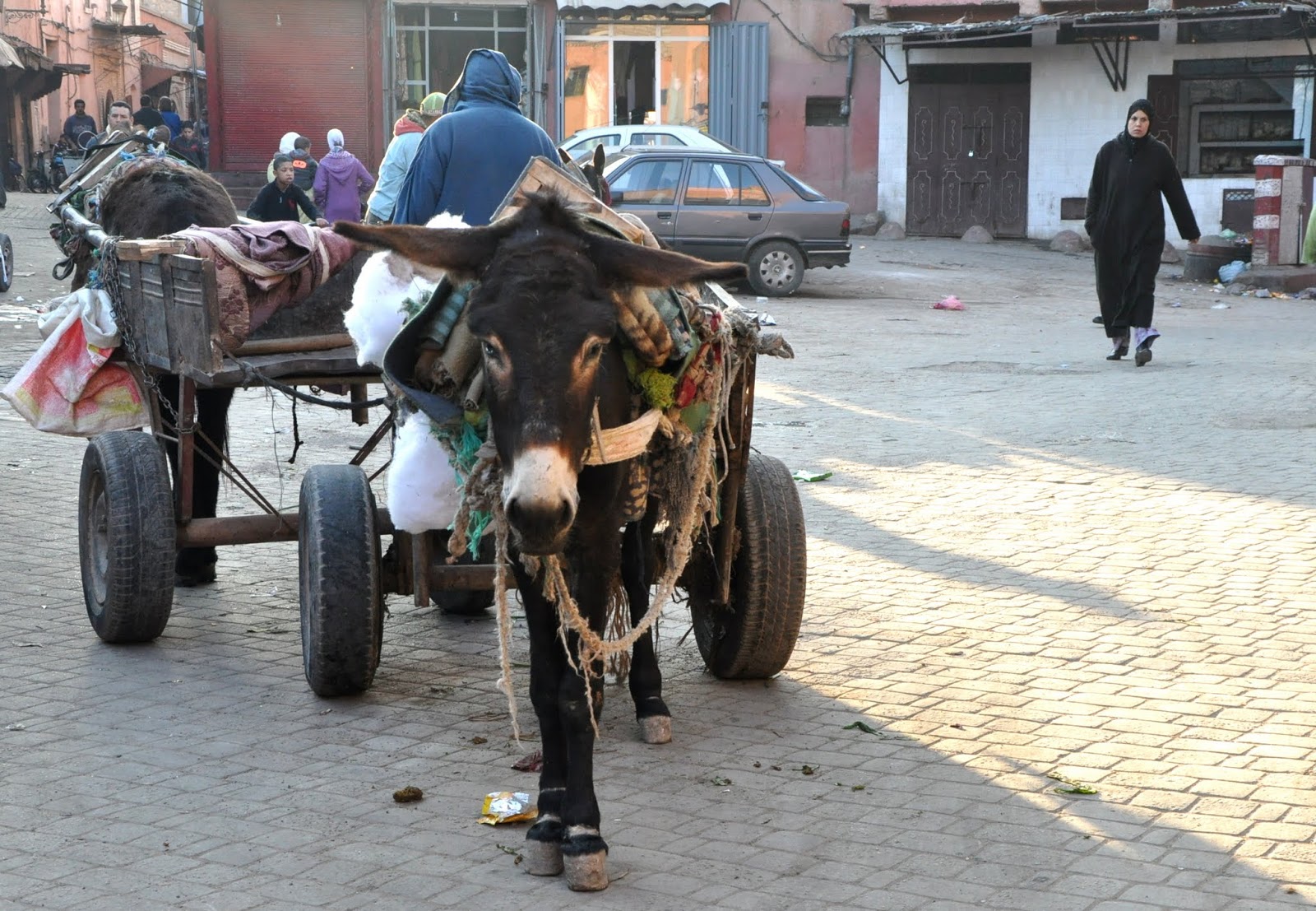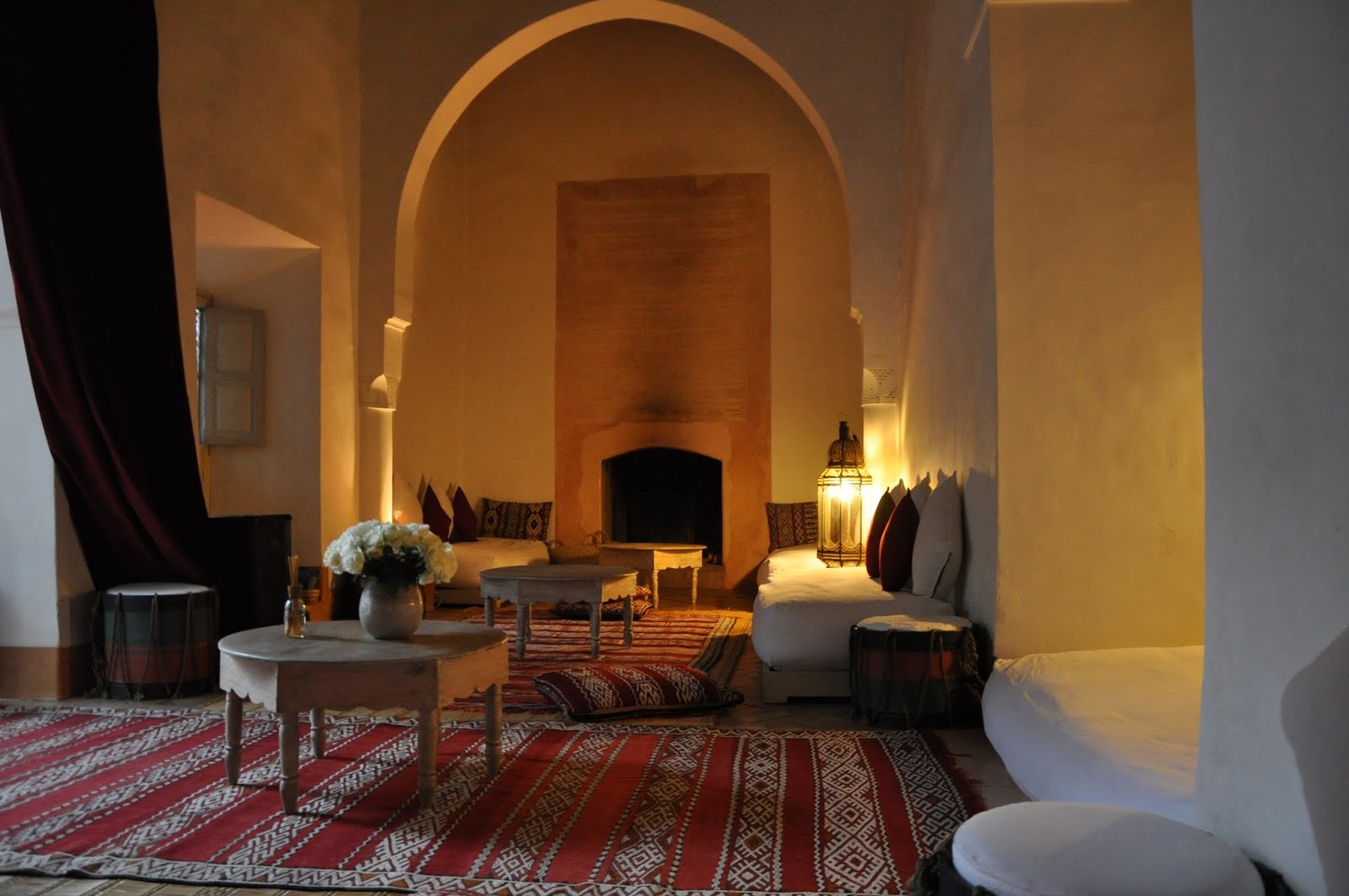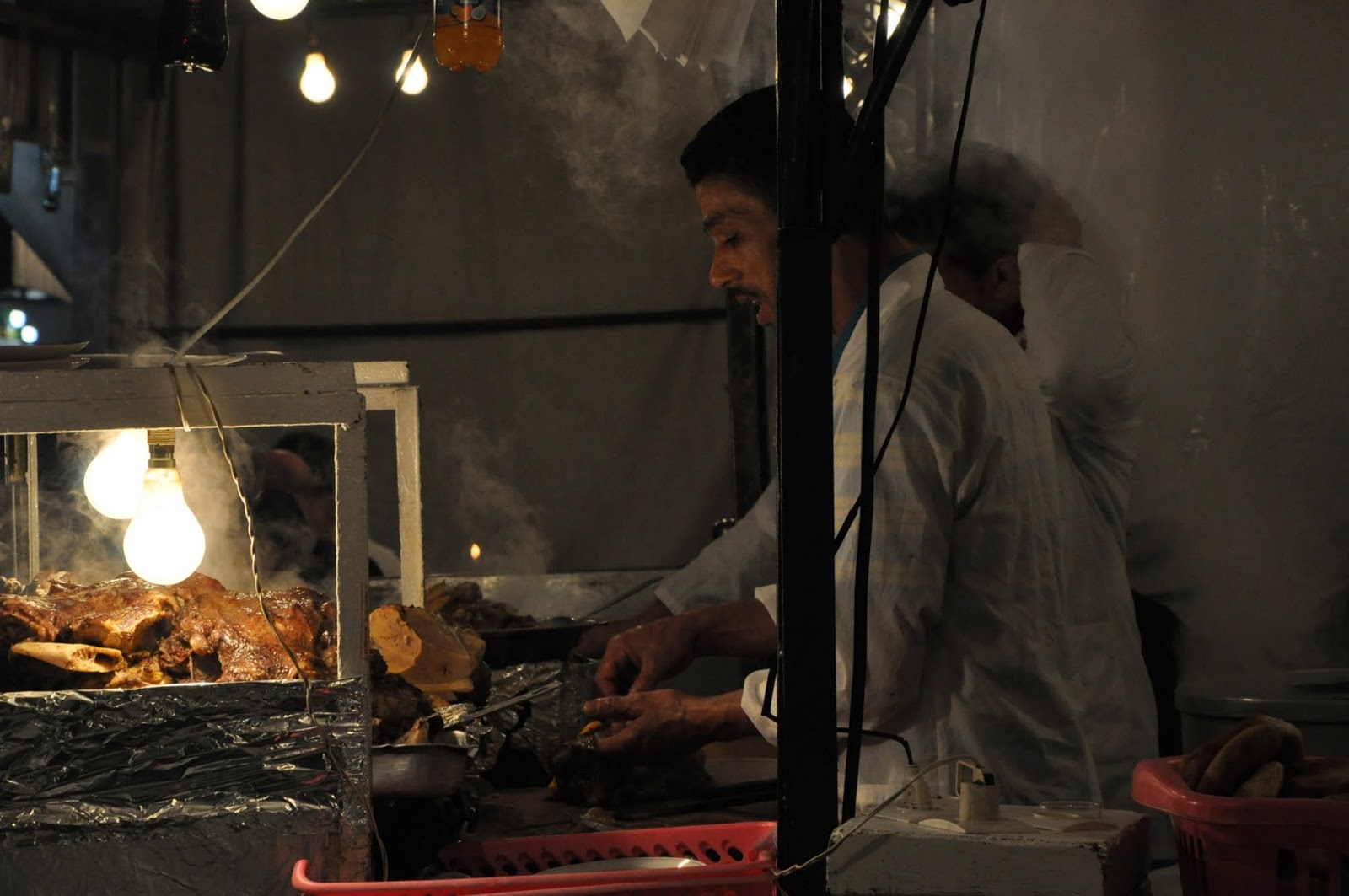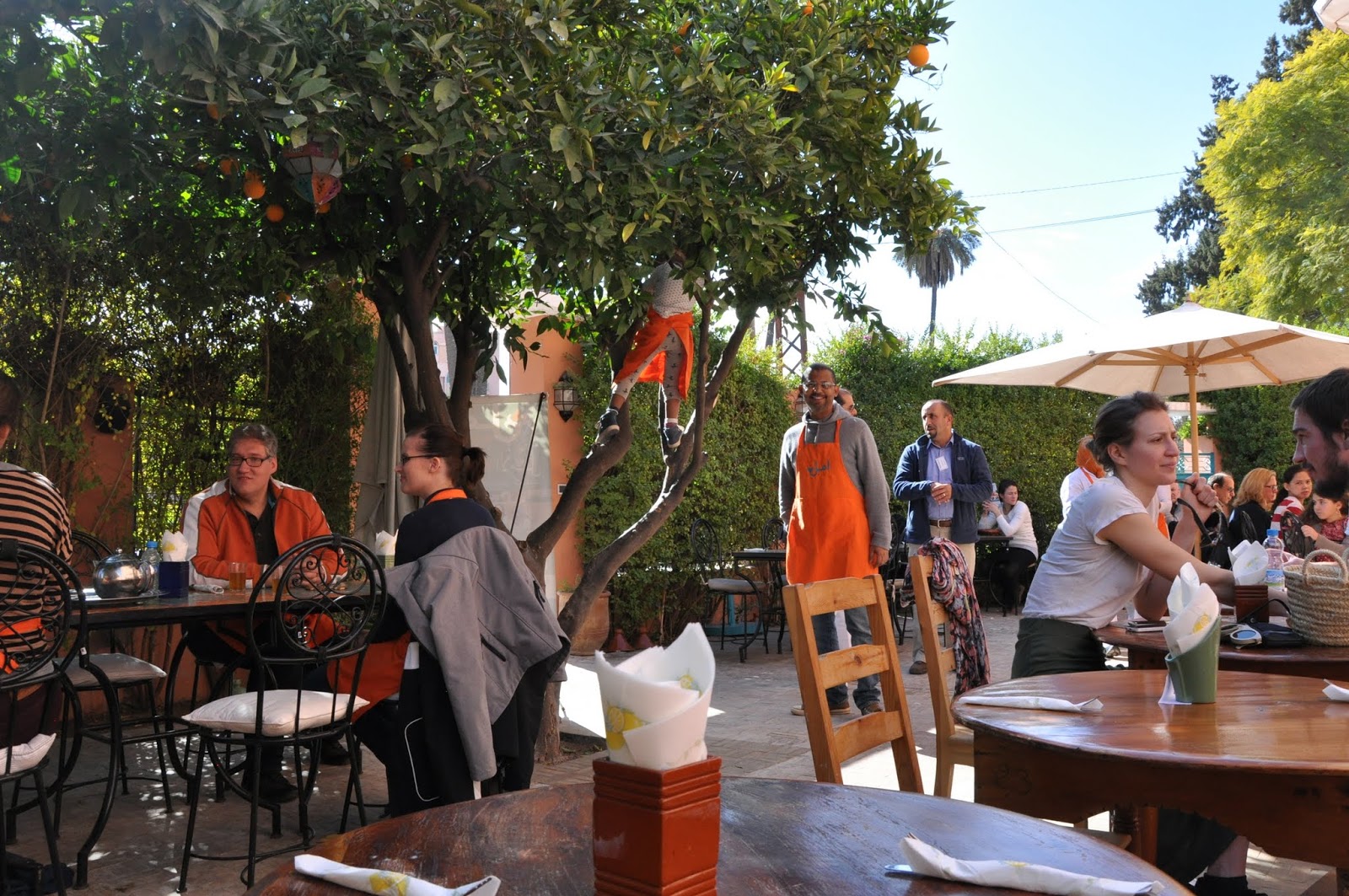Our butcher Munna's shop is a short walk away. Past a Mother Dairy booth where people queue to collect the day's milk in aluminium cans, past a small roadside shrine where people queue to offer flowers to the gods, past the ration shop where people queue for sugar, soap and rice. We would walk to the end of the road, turn the corner and queue for meat at Munna's Meat Shop.
We never had to queue for long, because Baba - or Doctor-saab as he is called - enjoys a few privileges. He would always be waved to the front of the queue to the chagrin of others in line; he would even get a discounted price. This was because Munna, apart from being the butcher, was also Baba's patient; quite regular in his ailments.
So, there Baba would stand, in his spotless white kurta-pyjama, with all of Munna's attention, pointing to shanks and shoulders, which were duly cut to size, or deboned and minced, according to the needs of Ma's kitchen. I would stand outside the crowded shop, waiting with the jute bag.
In India, meat shops are a far cry from butchers of the British high street. In Britain, you enter a spotless shop through a door usually covered with a curtain of metal chains. Once inside, there's a long, glass-covered cold-shelf on which sit different cuts of meat, all neatly labelled. The butchers, both men and women, are dressed in white, hair tucked inside white hats. There's a mincing machine. A cutting board. And not a splatter of blood. There's also a room at the back, but customers want to know nothing of what's happening there; it's far more 'civilised' this way. Don't wash your bloody meat in public.
Now, turn to the Indian butcher. He sells meat, and don't you forget it. There's no hiding your conscience in cling-filmed packages. Large carcasses hang upside-down from iron hooks in front of the open shop. A row of sheep heads decorate the shop's tiled platform, their eyes still surprised. The butcher sits behind this row. In front of him is a short tree stump - his chopping board. In his hands, a cleaver. You point to the portions you want - since every portion has a purpose - and with his cleaver, he cuts it up in a matter of minutes. When the cleaver hits a bone, he takes a heavy wooden rod and hits the top of the cleaver to cut through. He has no mincing machine. If you want your meat minced, his hand simply speeds up, bringing the cleaver up and down in rhythmic repeat, while his other hand dances in and out, sifting the meat between each chop, his fingers a nail-biting inch away from the blade. This continues till the meat is exactly the size you need them to be: coarse for a curry, medium-coarse for a pie, fine for a Shammi Kebab. And all this in the midst of loud conversation, and a faint sound of bleating from the back of the shop.
The British butcher, then, is a neat, less chaotic experience for me. The shopper in me much prefers this mild-smelling, white-aproned option, but the cook in me always leaves frustrated. Here, butchers are happy to sell you the few cuts they know well - a large shoulder or shank to be popped into an oven, small boneless dices to be put in a gravy, chops to be grilled. Mince comes in one variety - minced. A uniform, texture-less paste that is churned out of a machine. When I explain that I need pieces for a 'curry', but with the bone in, they're at a loss. Sometimes they bring out a saw. Yes, a large carpenter's saw. And they try to saw through the bone, slowly, painstakingly, as if they were building me a table. The saw cuts the bone in jagged edges, leaving sharp bits of bones in my curry. Yesterday, my conversation at the butchers went a step further. The young butcher asked me why I needed a mix of shank and shoulder, and then added, "I find that a bit weird to be honest".
When Baba finished buying his meat on those Sundays in Calcutta, I would hold my breath and step into the shop with my jute bag open. Baba would put the newspaper-wrapped meat in, and we would walk back home past the queues and the market crowd. Inside the bag would be mutton in a mix of cuts, a balance of textures; not too lean nor too fatty. Perfect for Robibarer Kosha Mangsho, the dry-gravied Sunday Mutton which Calcutta cooks on its day off. Tender meat and potatoes in gravy served with steamed rice and salad.
Ma's Sunday Mutton or Kosha Mangsho is a thing of beauty. And cooked in a way no other Kosha Mangsho is cooked I'm sure. Like all of Ma's cooking, it is uniquely spare in its method, and in its ingredients. It also ingeniously uses the fat in the meat for the main cooking. It is sumptuous, quick and a famed dish throughout the large, extended Ghosh family. And it's here on my blog today.
Ma's Sunday Lamb Curry
No, all Indian dishes are not spicy; this certainly isn't. Ma's cooking has always been simple and full of flavour, as truly good Indian food should be. Where spice is chosen with care and used with restraint. I need to dedicate a whole post on debunking myths about Indian food. But try this recipe, and I promise you'll be off to a good start.
Ingredients
1 kg lamb (mix of shank and shoulder, bone in)
3-4 potatoes, peeled and halved
2 onions - 1 large, peeled; 1 medium, peeled and sliced
Juice of half a lemon
5-6 large cloves of garlic
1 inch ginger, peeled and sliced in thickish round pieces
1 tomato, diced
2 bayleaves
2 small sticks cinnamon
2 cardamoms
2 cloves
1 tbs coriander powder
1 1/2 tsp paprika for colour
1/2 tsp turmeric
1/2 tsp fenugreek seeds
2-3 whole green chillies
1 tbs oil
Salt
Mix the meat with lemon juice and leave for an hour. Or even better, overnight in the fridge.
Put the meat in your cooking pot. Tuck in a large onion. Add 3 cloves of garlic and the bayleaves. Sprinkle liberally with salt. Add a small cup of water. Cover, and let simmer for 45 minutes to an hour.
While the meat's cooking, heat oil in a pan and lightly brown the potatoes on all sides and keep aside in a dish. They don't need to be cooked through, only browned.
After about an hour, take the whole onion out of the meat. Keep aside.
Tip the meat and stock into a large bowl. The liquid fat in the stock will rise and sit on top. Tip the fat slowly into a bowl. That is your cooking 'oil'. (If you have time, keep the bowl of meat and stock in the fridge for a couple of hours; the fat solidifies on top, and is very easy to skim out. Sometimes, when I'm having guests over, I boil the meat a day before, and refrigerate.)
Heat the fat in the same pot in which you'd simmered the meat. Lower the heat and add whole cinnamon, cardamom, cloves and fenugreek seeds. As soon as the fenugreek seeds start to brown, add the sliced onion. Stir till the onion is brown, then add the whole onion that had been fished out of the stock. This slow-simmered onion gives the gravy a beautiful, rounded flavour. With your spatula, mush up the onion. Add tomato, coriander powder, paprika and turmeric. (Add a couple of chillies, or a tsp of chilli powder at this point if you want to add some heat.) Mix it all up and stir for 5 minutes.
Now, add the meat with the stock, and the potatoes. Give it all a good stir.
Cover and cook till the potatoes are done and the meat is almost falling off the bone.
Remove from hob. Add the green chillies. Cover and let stand for 10 minutes before serving with steamed rice.
In India, meat shops are a far cry from butchers of the British high street. In Britain, you enter a spotless shop through a door usually covered with a curtain of metal chains. Once inside, there's a long, glass-covered cold-shelf on which sit different cuts of meat, all neatly labelled. The butchers, both men and women, are dressed in white, hair tucked inside white hats. There's a mincing machine. A cutting board. And not a splatter of blood. There's also a room at the back, but customers want to know nothing of what's happening there; it's far more 'civilised' this way. Don't wash your bloody meat in public.
Now, turn to the Indian butcher. He sells meat, and don't you forget it. There's no hiding your conscience in cling-filmed packages. Large carcasses hang upside-down from iron hooks in front of the open shop. A row of sheep heads decorate the shop's tiled platform, their eyes still surprised. The butcher sits behind this row. In front of him is a short tree stump - his chopping board. In his hands, a cleaver. You point to the portions you want - since every portion has a purpose - and with his cleaver, he cuts it up in a matter of minutes. When the cleaver hits a bone, he takes a heavy wooden rod and hits the top of the cleaver to cut through. He has no mincing machine. If you want your meat minced, his hand simply speeds up, bringing the cleaver up and down in rhythmic repeat, while his other hand dances in and out, sifting the meat between each chop, his fingers a nail-biting inch away from the blade. This continues till the meat is exactly the size you need them to be: coarse for a curry, medium-coarse for a pie, fine for a Shammi Kebab. And all this in the midst of loud conversation, and a faint sound of bleating from the back of the shop.
The British butcher, then, is a neat, less chaotic experience for me. The shopper in me much prefers this mild-smelling, white-aproned option, but the cook in me always leaves frustrated. Here, butchers are happy to sell you the few cuts they know well - a large shoulder or shank to be popped into an oven, small boneless dices to be put in a gravy, chops to be grilled. Mince comes in one variety - minced. A uniform, texture-less paste that is churned out of a machine. When I explain that I need pieces for a 'curry', but with the bone in, they're at a loss. Sometimes they bring out a saw. Yes, a large carpenter's saw. And they try to saw through the bone, slowly, painstakingly, as if they were building me a table. The saw cuts the bone in jagged edges, leaving sharp bits of bones in my curry. Yesterday, my conversation at the butchers went a step further. The young butcher asked me why I needed a mix of shank and shoulder, and then added, "I find that a bit weird to be honest".
When Baba finished buying his meat on those Sundays in Calcutta, I would hold my breath and step into the shop with my jute bag open. Baba would put the newspaper-wrapped meat in, and we would walk back home past the queues and the market crowd. Inside the bag would be mutton in a mix of cuts, a balance of textures; not too lean nor too fatty. Perfect for Robibarer Kosha Mangsho, the dry-gravied Sunday Mutton which Calcutta cooks on its day off. Tender meat and potatoes in gravy served with steamed rice and salad.
Ma's Sunday Mutton or Kosha Mangsho is a thing of beauty. And cooked in a way no other Kosha Mangsho is cooked I'm sure. Like all of Ma's cooking, it is uniquely spare in its method, and in its ingredients. It also ingeniously uses the fat in the meat for the main cooking. It is sumptuous, quick and a famed dish throughout the large, extended Ghosh family. And it's here on my blog today.
Ma's Sunday Lamb Curry
No, all Indian dishes are not spicy; this certainly isn't. Ma's cooking has always been simple and full of flavour, as truly good Indian food should be. Where spice is chosen with care and used with restraint. I need to dedicate a whole post on debunking myths about Indian food. But try this recipe, and I promise you'll be off to a good start.
Ingredients
1 kg lamb (mix of shank and shoulder, bone in)
3-4 potatoes, peeled and halved
2 onions - 1 large, peeled; 1 medium, peeled and sliced
Juice of half a lemon
5-6 large cloves of garlic
1 inch ginger, peeled and sliced in thickish round pieces
1 tomato, diced
2 bayleaves
2 small sticks cinnamon
2 cardamoms
2 cloves
1 tbs coriander powder
1 1/2 tsp paprika for colour
1/2 tsp turmeric
1/2 tsp fenugreek seeds
2-3 whole green chillies
1 tbs oil
Salt
Put the meat in your cooking pot. Tuck in a large onion. Add 3 cloves of garlic and the bayleaves. Sprinkle liberally with salt. Add a small cup of water. Cover, and let simmer for 45 minutes to an hour.
While the meat's cooking, heat oil in a pan and lightly brown the potatoes on all sides and keep aside in a dish. They don't need to be cooked through, only browned.
After about an hour, take the whole onion out of the meat. Keep aside.
Tip the meat and stock into a large bowl. The liquid fat in the stock will rise and sit on top. Tip the fat slowly into a bowl. That is your cooking 'oil'. (If you have time, keep the bowl of meat and stock in the fridge for a couple of hours; the fat solidifies on top, and is very easy to skim out. Sometimes, when I'm having guests over, I boil the meat a day before, and refrigerate.)
Heat the fat in the same pot in which you'd simmered the meat. Lower the heat and add whole cinnamon, cardamom, cloves and fenugreek seeds. As soon as the fenugreek seeds start to brown, add the sliced onion. Stir till the onion is brown, then add the whole onion that had been fished out of the stock. This slow-simmered onion gives the gravy a beautiful, rounded flavour. With your spatula, mush up the onion. Add tomato, coriander powder, paprika and turmeric. (Add a couple of chillies, or a tsp of chilli powder at this point if you want to add some heat.) Mix it all up and stir for 5 minutes.
Now, add the meat with the stock, and the potatoes. Give it all a good stir.
Cover and cook till the potatoes are done and the meat is almost falling off the bone.
Remove from hob. Add the green chillies. Cover and let stand for 10 minutes before serving with steamed rice.
COMMENT CAVEAT: Many of you have written to me saying that comments you leave here are often not published. So, a little note: if you don't see your comments here in 24 hours, please know that they have not reached me at all! Blogger can play up, and I hate to think that words you've taken time and care to write down have vanished into ether or been eaten by the Blogger Monster. So please, email me your comments if you find them missing, at peppercornsinmypocket@gmail.com, and I promise to post them for you, and write back.

























































